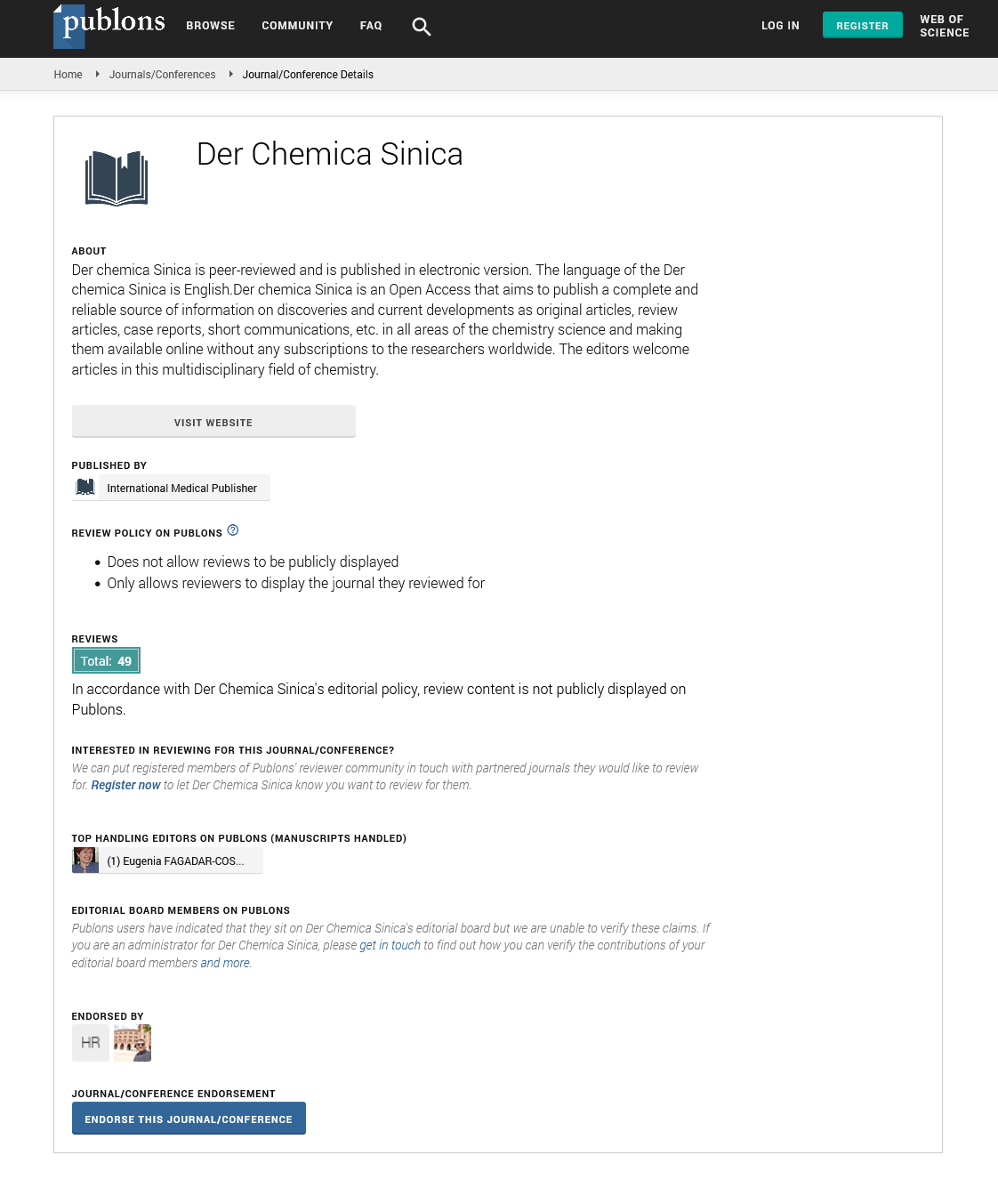ISSN : 0976-8505
Der Chemica Sinica
Abstract
Microwave-assisted extraction of gallic acid in leaves of Eucalyptus x hybrida Maiden and its quantitative determination by HPTLC
High yield and fast extraction performance ability with less solvent consumption and protection offered to thermo labile constituents are some of the attractive features of this new promising microwave-assisted extraction (MAE) technique. Therefore, MAE of gallic acid in the leaves of Eucalyptus x hybrida Maiden has been carried out and precise HPTLC method was developed for quantitative analysis of gallic acid in the leaf extracts. A range of non-polar to polar solvents were used for the MAE. A mixture of methanol: water (60:40, v/v; 20 mL) as solvent and microwave power (900 W), irradiation time of (120 s) were found to be most favorable for maximum extraction of gallic acid from the leaves. HPTLC experiments were performed on aluminum sheets pre-coated with silica gel 60 F254. For achieving good separation, mobile phase consisting of chloroform: ethyl acetate: formic acid (50:50:3, v/v/v) was used. The densitometric estimation of gallic acid was carried out at λ 288 nm in remission/absorption mode. Method was validated in terms of linearity, specificity, precision, accuracy and recovery. Maximum yield 27.3% of extract was found with methanol: water (60:40, v/v) mixture, while lowest yield 2.36% was found with n- hexane when used as solvent. 100 g leaves of E. hybrida contained 114.26 μg of gallic acid on dry weight basis, when extracted with mixture (methanol: water). The proposed method would be useful for rapid quantitative determination of gallic acid in E. hybrida and its related preparations for quality assessment
Author(s): S. C. Verma , 1, 2, S. Nigam1 , C. L. Jain2, P. Pant1 and M. M. Padhi1
Abstract | PDF
Share This Article
Google Scholar citation report
Citations : 6019
Der Chemica Sinica received 6019 citations as per Google Scholar report
Der Chemica Sinica peer review process verified at publons
Abstracted/Indexed in
- Google Scholar
- Open J Gate
- Genamics JournalSeek
- China National Knowledge Infrastructure (CNKI)
- Directory of Research Journal Indexing (DRJI)
- Publons
- MIAR
- International Committee of Medical Journal Editors (ICMJE)
- Serials Union Catalogue (SUNCAT)
- Geneva Foundation for Medical Education and Research
- Secret Search Engine Labs
- Euro Pub
- CAS (Chemical Abstracting Services)
- University of Barcelona
Open Access Journals
- Aquaculture & Veterinary Science
- Chemistry & Chemical Sciences
- Clinical Sciences
- Engineering
- General Science
- Genetics & Molecular Biology
- Health Care & Nursing
- Immunology & Microbiology
- Materials Science
- Mathematics & Physics
- Medical Sciences
- Neurology & Psychiatry
- Oncology & Cancer Science
- Pharmaceutical Sciences
